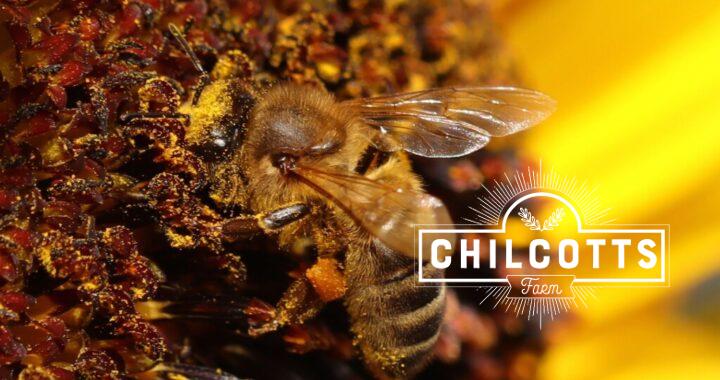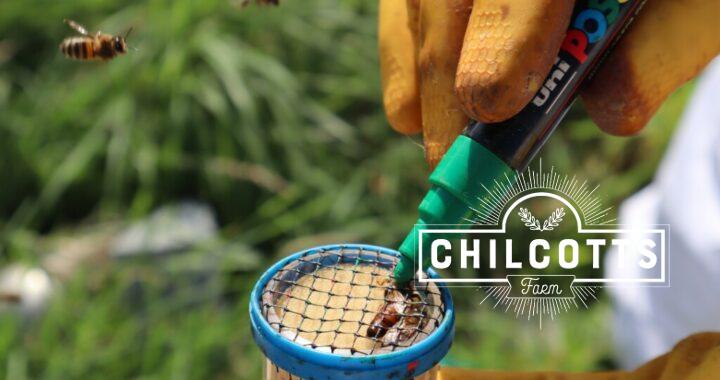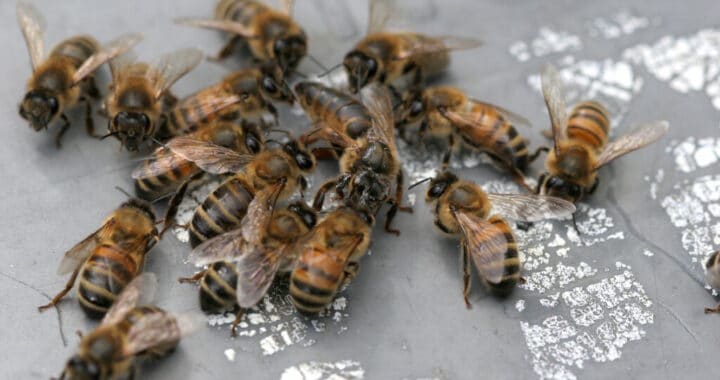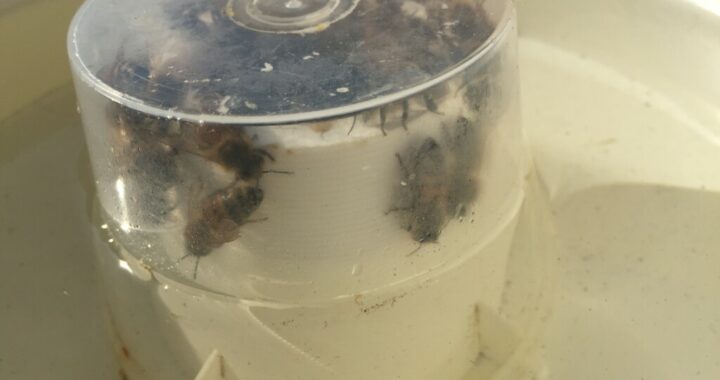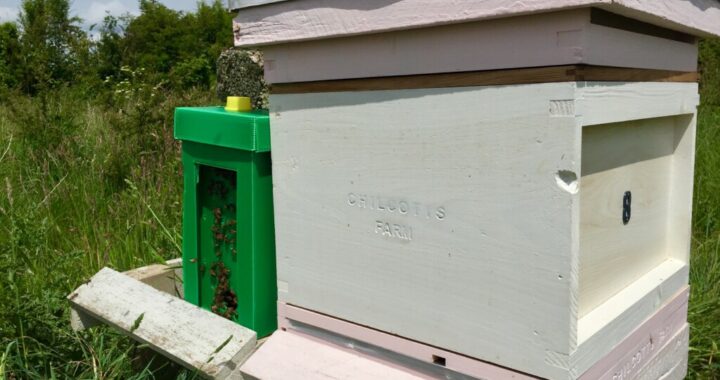This little lady was buy yesterday on a late sunflower. Even though it is mid September, some of the sunflowers are still in full bloom, and the bees are all over them. They must be a good source of pollen at this time of year!
Tag: bbka
New Bees for the Winter
As we move toward the winter months, the hive is beginning to prepare for the colder weather. Having gathered their honey as winter food to keep them going until the first spring flowers, the winter bees are beginning to emerge.
If you look closely, you can see some bees just poking their heads out of their cell. They are removing the capping from the cell where the egg was laid and they have transformed into a bee. Once emerging they will join the rest of the colony.
These new bees are potentially the bees that will take the colony through the winter until early spring. Winter bees tend to live for 5 months, whereas the bees hatched out in spring and summer live for about 6 weeks!
Marking the Queen Bee
As the season draws to a close, it gives me a chance to undertake some final checks on the colony and perform some house keeping.
Today was a chance to mark some of this year’s queens. The queen bee is larger than the workers, but is often difficult to find amongst all her daughters. Being able to easily see her speeds up the hive inspection.
Queens are colour coded depending on the year, this helps you remember their age. For 2019 the colour is green.

Even Honey Bees need a drink.
This little lady, is on a pebble at the waters edge taking a drink. You can see her little proboscis sticking out and taking up the water.
Bees not only need water to live, but also use it to rehydrate their honey.
The Queen is Laying!
The #BidefordHoneyBeeSwarm, collected from Bideford in Devon, has settled into its new hive nicely.
With the poor weather, I have continued to feed the bees, which has enabled them to build comb quite rapidly.
I inspected the bees last Sunday to discover a whole frame (both sides) full of sealed brood (bee larvae) and a large Healthy Queen bee walking around. This is a very positive sign!
I often get asked “What does the Queen look like?”. In this picture, in the middle, you can see a Queen Bee that has just returned from a mating flight.
Surrounded by attentive workers, she will soon get slightly bigger to the extent that she is unable to fly. At her peak she could be laying in the region of 1,000 eggs a day!
Feed Me, Feed Me Now!
The third installment of the #BidefordHoneyBeeSwarm.
On day three of collecting the swarm from Bideford, the bees have bee put into a new hive, and are now being fed with sugar syrup. At this point I would typically medicate the bees against the Varoa mite, but haven’t had the chance to do this yet.
In the picture, you can see the bees coming up from the hive below into a feeder.
The feeder is essentially a dish with a lid, that I fill with sugar syrup. The feeder sits on top of the hive in a box that I cover with the roof, so its normally in the dark inside the hive.
The sugar syrup is 1 part sugar to 1 part water and is typically fed to the bees during spring and summer to encourage the queen to lay.
In this instance I have given it to the bees to encourage them to build out comb in the hive, but also at this time of year (May/June) there may not be too much forage (flowers) around for the bees as we are on the cusp of the summer flowers coming out.
Collected Swarm Settled In to the Quarantine Apiary
The second part of #BidefordHoneyBeeSwarm. A couple of days ago, I collected a swarm of honey bees from Bideford.
The small colony of bees collected from the plum tree have been put into a small hive (Nuc) and placed in the quarantine apiary. Here they will be treated for disease and on day 3 fed a light sugar syrup to help them build in size.
Currently I have placed the Nuc next to the hive where they will be housed.
The bees have started leaving the Nuc and familiarising themselves with the surrounding area. You can see this by their behavior. When the Nuc was first positioned and the bees let out, they would emerge from the Nuc and fly in ever increasing circles up into the sky.
This is to allow them to spot landmarks and orientate in relation to their new home.
The next step will be to feed and medicate the new colony.

